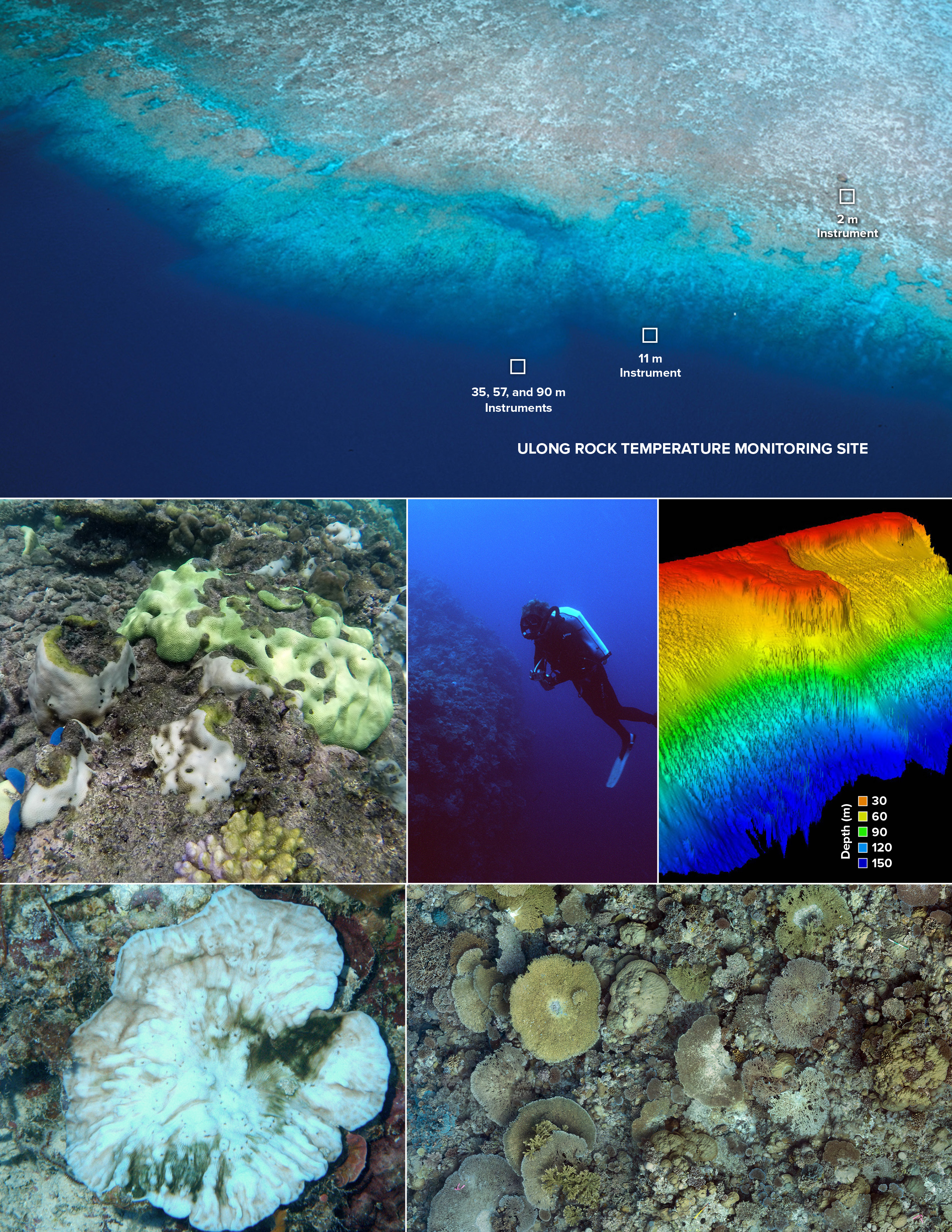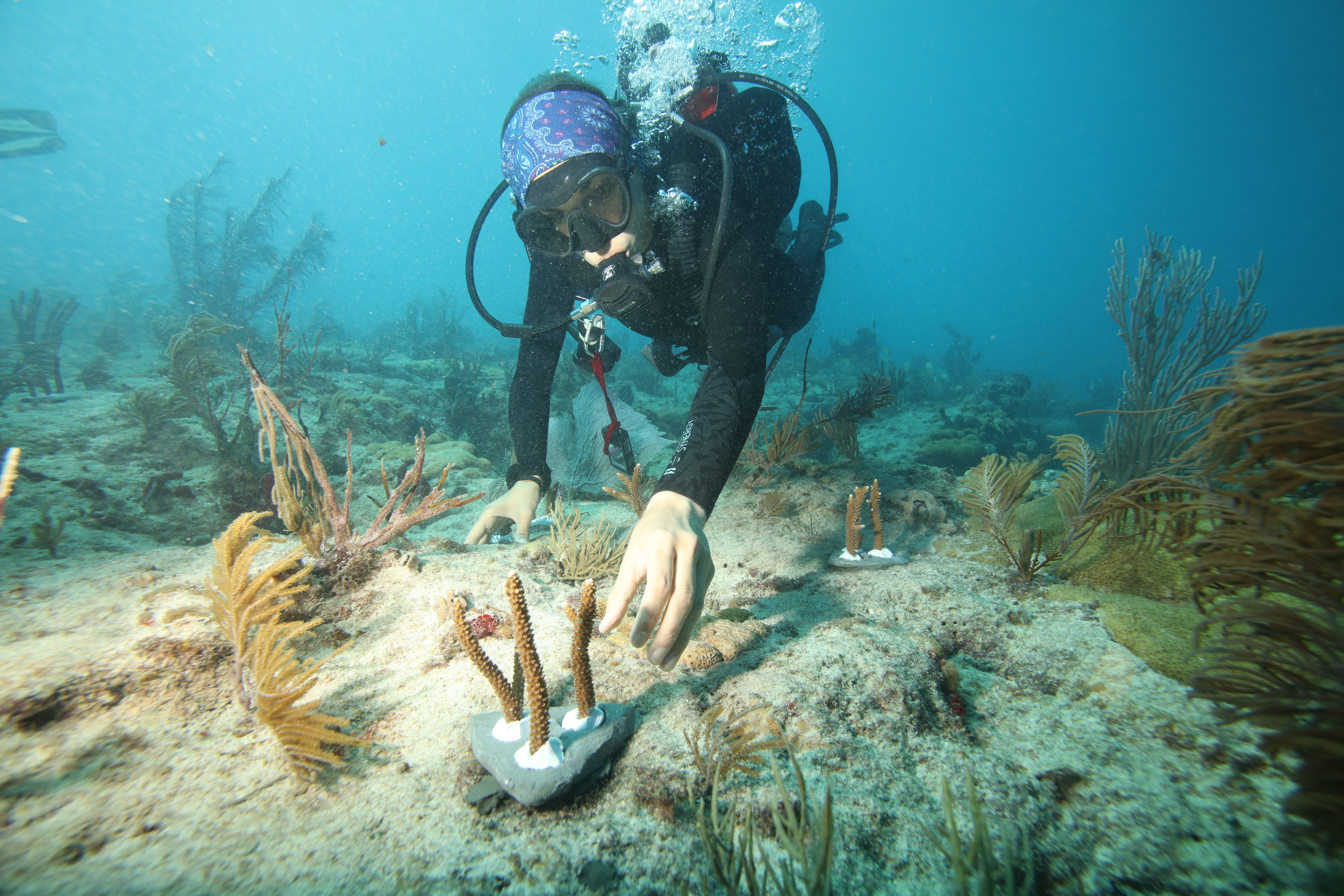Coral Reef Restoration and NWF
National Wildlife's "Spawning a Solution" and Coral Reef Restoration Research
Hello!
Welcome to my article in reaction to Paul Tolmé's article in National Wildlife's "Spawning a Solution" edition. First, I would like to say, I believe this article is beautifully written as it breaks down the geographical, numerical, and consequential components of coral reefs newly discovered waterborne illness, "Stony coral tissue loss disease" located in Palau and in the United States off the coast of Florida (the Reef Tract). It is upsetting to learn that this disease contributes to the everlasting coral reef collapse and the impact of human activity resulting in harm to the reef's health. Additionally, the consequential effects of global warming in various aspects regarding coral health.
Components of Tolmé's article:
 |
| Ocean Warming and the Reefs of Palau |
-Florida Reef Tract (360 miles)
-Human activity and its harm
-Additional harms to the endangerment of the reefs
-Stony Coral Tissues Disease
-Coral rescue efforts
-Profound importance of coral reefs
-Immediacy of this situation
-Polyp transfer to symbiotic algae tanks
-What sick coral reefs indicate for our oceans
Florida:
From this article, one can learn the current state of decline that Florida's Coral Reef Tract is experiencing. Tolmé discusses the decline resulting from human activity and reported that only 2% of Florida's coral cover is remaining according to Mote Marine Laboratory. Additionally, a strange waterborne illness, known as the "Stony Coral Tissues Disease" has welcomed itself into the reefs, putting nearly 45 coral species at risk. The article also stated that because of the rate at which the disease travels, coral colonies are more susceptible to death spanning a timeline from weeks to months.
 |
| Florida's Coral Reef Tract |
What's being done:
-Biologist Jennifer Moore of the National Oceanic and Atmospheric Administration (NOAA) and other Federal and Florida state officials launched the largest coral rescue efforts ever taken
-The goal is to gather 4,400 specimens to protect them against this disease (and propagated in tanks protecting genetic diversity and offspring) and then later returned to the ocean
-$14 million project
-The project is currently in its third year
The most shocking part of the article:
The most shocking section of this article for me was under "Coral Reefs in Collapse". In this section, I learned that today's reef-building corals potentially date back to 250 million years ago and have even survived four mass extinctions. Scientists have no reported instances of corals dying from old age. Even though they have an immortal type of reputation, they are substantially collapsing today from rising ocean temperatures as a direct result of greenhouse gas emissions resulting in "bleaching".
Bleaching: An occurrence in which coral polyps eject their symbiotic algae and turn white
This section of the article puts the severity of harm the coral reefs are facing in perspective and how urgent of a situation this is. This is also no small project; these reefs can span for many miles and are located around various spots of the world in our oceans. I was happy to read the immediate steps that could be taken to help with the protection of the reefs according to National Wildlife Federation Chief Scientist, Bruce Stein. He indicated that an effective way to ensure the safety of these reefs would include the creation of protected coral sanctuaries especially for the reefs mainly affected by the temperature changes and the severity of it given their remote or specific locations.
Relief efforts and tactics I agree with and want to suggest:
-Coral restoration upscale and emphasis on focus areas and spread of wide range treatment areas (agree)
-Emphasis on oil spills, natural disasters, and temperature issues if we only focus on small areas for treatment to continue strength and push of the upscale (a consequential perspective) (suggestion)
-Continuation of the removal of (some) branches (and polyp transfer) to propagate them and learn reproduction and heath of the coral (agree)
-NWF's decades of supported policies and programs for water pollution reduction advocacy (agree)
-Public education (agree)
-Further public education/ awareness through mainstream media but through the most popular attention-grabbing strategies. For example, just the other day I opened the popular video-creating app, "Tik Tok" and immediately upon opening the platform, an ad popped up before I could scroll through content (every day to all users) I think this would be a beneficial way of catching a wide range audience's attention given the various age range of the app's users and the hunger for content creating an individual's attention span to be of higher range (suggestion)
-University of Miami's "out plantings" of captive-bred corals (agree)
 |
| University of Miami's out planting project |
-The creation of labs and specific aquariums around the world ensuring sites for propagation and centers responsible for out planting (suggestion)
-(Perhaps a more obvious, but an important one) The continuation of global warming awareness and initiatives to reduce it. I think it's interesting that since COVID-19, China's C02 emission rates have been cut by 25% (and were still below normal more than two months after lockdown) I find it sad and very annoying that it took a pandemic for people to understand the drastic change in which humans contributed to the warming (Suggestion)
Questions I have/ information I want to investigate further:
-What percentage specifically has propagation improved the health and advancement of safety for the coral?
-Summer full-moon spawning and lab LED replication (for both moon and sun)
-Why don't more people consider global warming?
-How can we improve propagation efficacy in the event of increased natural disaster frequency?
-Is there a way to improve the efficiency of out plantings and how can we propose this method across the world?
-How can we avoid political debate while deciding how to best move forward with such charged topics such as global warming and funding issues?
-What can individuals with little knowledge or background of this worldwide issue do to help?
-Without removing coral branches, is there a way to potentially control or contain symbiotic ejections specific to certain coral colonies?
Works Cited:
Tolmé, P. (2021). Spawning a Solution. National Wildlife , 59(4), 24–29.
Analysis: Coronavirus set to cause largest ever annual fall in CO2 emissions. Carbon Brief. (2021, April 7). https://www.carbonbrief.org/analysis-coronavirus-set-to-cause-largest-ever-annual-fall-in-co2-emissions.
**Images linked via blogger


Comments
Post a Comment